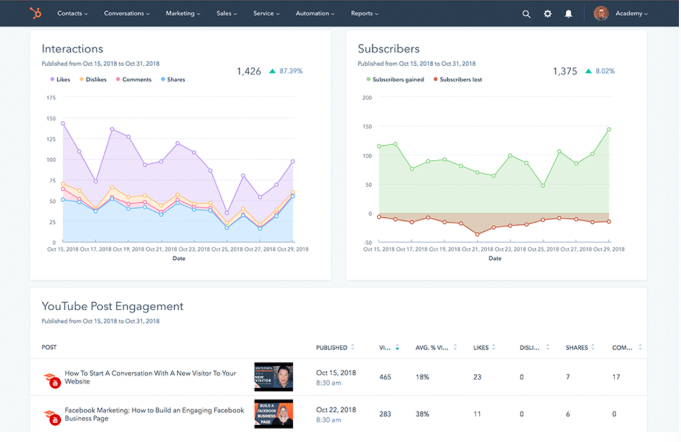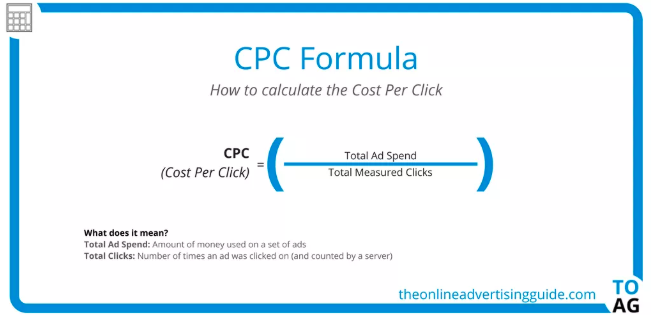We get it: Social media metrics are important. Getting data and ROI is really important. However, if you spend too much time trying to figure out which metrics are important for your business, you won't have any time to analyze and act upon them.
That's why we've made a list of the social media metrics that are essential to track, so you don't miss out on important numbers that can help you later. These metrics will give you insight into customers, how to track ROI, improve your brand presence online, and walk away with happier customers.
Social Media Metrics are imperative to social strategy. They give you an inside look at how your channels are performing and how you are perceived by your target audience. They can also give provide you with ways to improve upon your strategy.
1. Audience growth rate
To measure your audience growth rate, begin by selecting a reporting period. Then, calculate your new followers over that specific period. After that, you'd need to divide your new followers by your total followers.;
So let's say your brand's Twitter account has 6,000 followers in September, at the end of Q3. For Q4, you want to measure your audience growth rate from October 1st to December 31st. If by December 31st, you have 8,657 followers, then your audience growth rate for Q4 is 69%.;
2. Social share of voice
How many people are talking about your brand on social channels? Let's find out.;
Your social share of voice measures this data and shows how visible your brand is on social media. Finding these numbers could tell you whether you need to update your social strategy or not.;
To calculate your social share of voice, measure your mentions across your social networks. Hint: Your social media analytics tools can be helpful when calculating this number. Next, add your mentions in tandem with the mentions of competitors, which can be tracked using an online social media tool like Sprout Social. This gives you the total industry number of mentions. Here is an example of what metrics of engagement would look like:
After you divide your brand mentions by the total industry number, multiply this number by 100 to get the social share of voice percentage.;
Let's put this in perspective. Over a week, your brand has been mentioned directly and indirectly 100 times. Three competitors have 500 mentions, plus yours equals 600. Taking 100 divided by 600 and multiplying that number by 100 means your Social Share of Voice is 16.67%.;
3. Keywords
Tracking keywords can grow your social share of voice and audience growth rate. Keywords are certain words that search engines identify and target based on what audiences are searching for. A marketer in the tech industry might see the keywords, "Media Marketing," and "Tech Channels.";
By tracking keywords, you can optimize your content to rank higher on search engines and grow your audience. You can track keywords by using social media analytics software, like Google Analytics or SEMrush.;
4. Customer response rate
Customers love to engage with brands via social media.;
In fact, in a survey done by The Manifest, 96% of respondents engage with brands they follow on social media. Whether they’re asking your customer service team questions or leaving your business reviews, make sure you're answering as many mentions as possible on social media. To track how you’re doing here, check your customer response rate.;
To calculate your customer response rate, divide the number of responses you give to your followers/customers by the number of people who engaged with your brand and multiply this by 100.;
For example, if you measured a week of engagement, and the number of customers who engaged with your brand was 50, and you responded to half of them, your customer response rate would be 50%.;
5. ROI data
This is the big metric, the one you want to see from day one. Depending on your company and industry, ROIs can differ greatly. For social media, you probably want to know if the time and money you've spent on social media is turning into customers, sales, or brand awareness.;
Since ROI looks different from one business to the next and calculations are based on your business goals, not every formula will look the same. But, use this formula to figure out a basic ROI.; Let's say you made $1500 in revenue from social media ads or eCommerce and your investment was $500. Your ROI is revenue subtracted from investment (1500 minus 500), which makes your profit $1,000 and your ROI 100%.;
6. Channel reports
Keeping track of social media data is important so that you know where and how to focus your strategy. For instance, if one of your accounts just isn't hitting their numbers, a report would let you know and allow you to proactively step in and troubleshoot.;
If you need an update about say, channel performance and follower counts, consider conducting a social media audit or using a social media analytics tool that conducts an audit for you.
7. Conversion rate
Your conversion rate is made up of the number of visitors to your website that take your desired action. This might mean that they downloaded your eBook, signed up for your newsletter, or clicked "Play" on your podcast. Conversion rates show how relevant your content is to your audience.;
If you want to calculate the conversion rate, start by making sure your call-to-action link is trackable. You can do this by using a free, online URL shortener like Bitly. Next, analyze your campaign to identify the number of clicks and conversions your page has gained.
After that, divide your conversions by total clicks and multiply it by conversion rate. If your webpage has about 750 clicks and 200 conversions, then your conversion rate is 26.6%. Keep in mind that conversion rate numbers are not mutually exclusive,and can be low even if traffic is high.;
8. Cost-per-click (CPC)
This is an important metric if you're investing in social media. Cost-per-click (CPC) is what you pay per click on a sponsored social media post, like a banner ad. CPC is helpful when determining if your investment is worth continuing.;
Here is the CPC Formula from The Online Advertising Guide. To view this as an example, say you want to calculate the CPC of your latest round of ads. Divide the total money spent on your ads by the total number of times the ad was clicked on.
9. Net promoter score (NPS)
Net Promoter Score (NPS®) measures customers that are loyal to your brand. It's the answer you're looking for, when asking customers how likely they are to recommend your business to a friend. Tracking NPS is easier than it seems.
There are three categories that go into tracking NPS. When you ask customers to rate your business 1-10, scorers that answer 9-10 are "Promoters." "Passives" score 7-8, and "Detractors" are 0-6.;
Identifying your NPS is as simple as subtracting "Detractors" from "Promoters" and dividing that by the number of total respondents. Then, multiply that number by 100. So, if you have 50 "Promoters" and 10 "Detractors" from a survey with 70 respondents, your NPS would be 57%.
Tracking metrics can sometimes be easy. Sometimes, businesses realize that it's worth the investment to invest in social media tracking tools to help them run more smoothly.


No comments:
Post a Comment